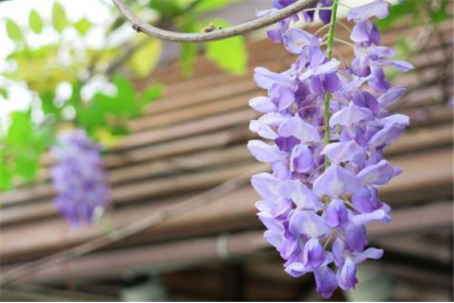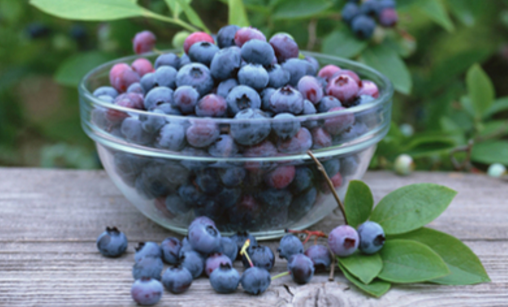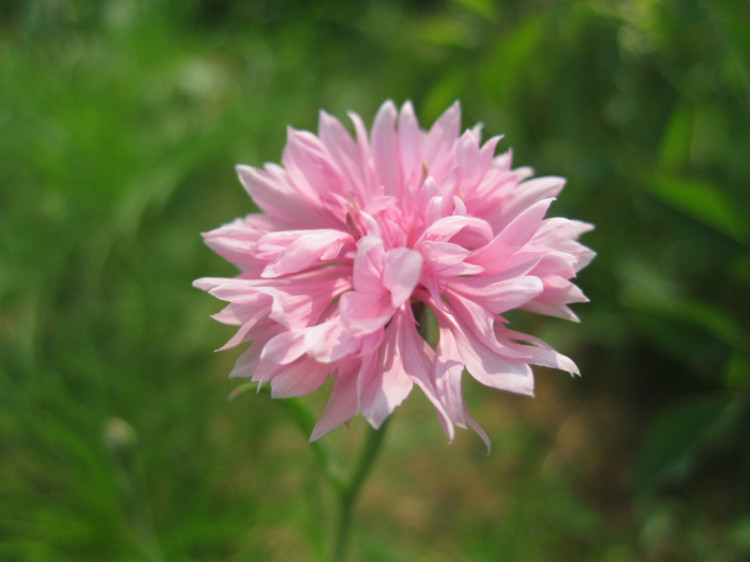Maintenance methods of wisteria bonsai:
1. Better dry than wet watering
Potted soil watering pays attention to principles, too much watering, basin soil is too wet, but is not conducive to the cultivation of flowering, especially in August flower bud differentiation period, should be appropriate to control the amount of watering, after falling leaves should be less watering.

two。 Pruning
When the wisteria sprouts in spring, pick the dense buds properly. When the new branch grows to about 20 centimeters long, cut off the overlong part. In the process of cultivation, pay attention to cutting off overgrown, weak and diseased branches at any time. Pruning during the dormant period is also essential.
3. Turn the basin
It is better to choose the time before the sprouting of early spring. The basin is turned every 2 murals-3 years.
4. Pest control
Wisteria has fewer diseases and insect pests. Its pests include aphids and leaf moths. The method of prevention and control is to spray trichlorfon and emulsified dimethoate.
Is it particularly meaningful to learn about the breeding and nursing methods of wisteria bonsai with the editor? Go and try it yourself!
The culture method of wisteria bonsai: 1. Collect seedling source
The best temperature for wisteria sowing is 10 ℃-13 ℃, so it is best to sow in early spring, and when cutting in autumn, choose the stem branches of the current year as cuttings of 8cm. Go to the deep mountain to dig the wild old root pile, raise the billet 1 year later, can go on the basin to carry on the processing.
two。 Upper basin
Put it in the pot before the wisteria leaves, the pot soil had better be made of rotten leaf soil and garden soil, because it will be more fertile and the drainage is better. With basin can choose a deeper purple sand basin, a variety of shapes, round, square, hexagonal.
3. Modeling
The modeling of wisteria bonsai should fully show its simple natural form. Branches should be layered and crisscrossed, because their leaves are usually large and fertile, so the shape should look natural and better.
Know how to plant wisteria bonsai, and then take a look at its maintenance methods!
Maintenance method of wisteria bonsai
Maintenance method of wisteria bonsai
Wisteria is a perennial woody vine of the genus Wisteria in Leguminosae. The flower is purple, the florescence is from April to June, the raceme is drooping, the pod is flat, long and ornamental. Wisteria likes warm, moist and sunny, shade-resistant, drought-resistant, loose, fertile, good sunny ground, and avoid strong winds.
The cultivation methods of wisteria bonsai are as follows:
First, Miaoyuan
It is feasible to sow and cuttage propagation. The sowing time is in early spring, and the temperature is required to be 10 ℃-13 ℃. Cutting propagation can be carried out in autumn. When cutting, select the branches of the stem of the current year as cuttings of 8Murray 10cm. Cutting with heel can take root quickly. The wild old root pile can also be dug in the mountain field, and the billet can be processed in the basin after raising the billet for 1 year.
Second, modeling
1. Upper basin
Spring 2mi-March, it is better to plant wisteria before long leaves. The basin soil is made of fertile, well-drained rotten leaf soil and garden soil. With the basin, you can choose a deeper purple sand basin, which is square, rectangular, round, and oval in shape.
2. Modeling
The modeling of wisteria bonsai is judged by pruning and supplemented by Panzha, which aims to fully show its simple natural form. Branches should be scattered up and down to avoid monotony, and there should be fewer layers rather than more. The forms of wisteria bonsai are curved dry type or oblique dry type, hanging branch type and cliff type, and can also be made into stone-attached type.
3. Maintenance
(1) watering
Wisteria consumes a lot of water, but it is still better to be dry than wet. The potted soil is only wet but not dry, which is not conducive to its flowering. Watering should grasp the principle of whether it is dry or not, and if it is watered thoroughly. Especially during the period of flower bud differentiation in August, water should be deducted properly. Normal watering can be carried out in September. Water less after the leaves fall in late autumn.
(2) fertilization
The frequent application of thin fertilizer is an important measure to make wisteria blossom. During the growing period, it can be combined with watering and apply thin cake fertilizer once a month until the fertilizer is stopped from July to August. Fertilization should be continued in September, but the frequency and concentration should be reduced appropriately. Before flowering, phosphorus and potassium fertilizer can be applied appropriately.
(3) pruning
When wisteria sprouts in spring, the dense buds should be picked properly. When the new branch grows to more than 20 centimeters long, the excessive part can be cut off. In peacetime, pay attention to cutting off long branches, diseased branches and weak branches at any time. Pruning should also be carried out during the dormant period. In September, the old leaves of wisteria are easy to age and sag, affecting their appearance. Old leaves can be removed to promote the germination of new leaves. The sprouting new leaves are green and delicate, which can postpone the deciduous period and prolong the viewing period.
(4) turning the basin
It is better to choose the time before the sprouting of early spring. The basin is turned every 2 murals-3 years.
(5) Disease and pest control
(6) wisteria has fewer diseases and insect pests. Its pests include aphids and leaf moths. The control method is to spray trichlorfon, emulsified dimethoate and other medicine solution.
- Prev

Will you die if you eat 250g blueberries at a time?
The editor solemnly tells you that eating 250g blueberries at a time will not kill you! Usually what we buy in the supermarket is a box of blueberries, a box of about 125g, many people love to eat blueberries, unwittingly eat a whole box of blueberries, although will not die, but may cause some uncomfortable symptoms
- Next

How to plant cornflower seeds?
The cultivation outline can be planted in spring and autumn, and autumn sowing is better. The seeds were sown in the seedbed in the middle and late September, and the soil was covered with. Do not see the seed as the standard, compaction, not too hard. Cover grass, watering, always make the soil moist, sprouting to remove turf. When the seedlings have about 6 leaflets, they can be transplanted or planted.
Related
- Fuxing push coffee new agricultural production and marketing class: lack of small-scale processing plants
- Jujube rice field leisure farm deep ploughing Yilan for five years to create a space for organic food and play
- Nongyu Farm-A trial of organic papaya for brave women with advanced technology
- Four points for attention in the prevention and control of diseases and insect pests of edible fungi
- How to add nutrient solution to Edible Fungi
- Is there any good way to control edible fungus mites?
- Open Inoculation Technology of Edible Fungi
- Is there any clever way to use fertilizer for edible fungus in winter?
- What agents are used to kill the pathogens of edible fungi in the mushroom shed?
- Rapid drying of Edible Fungi

